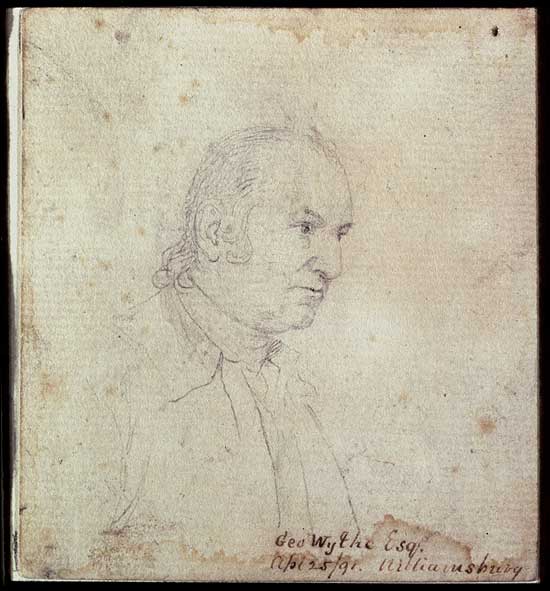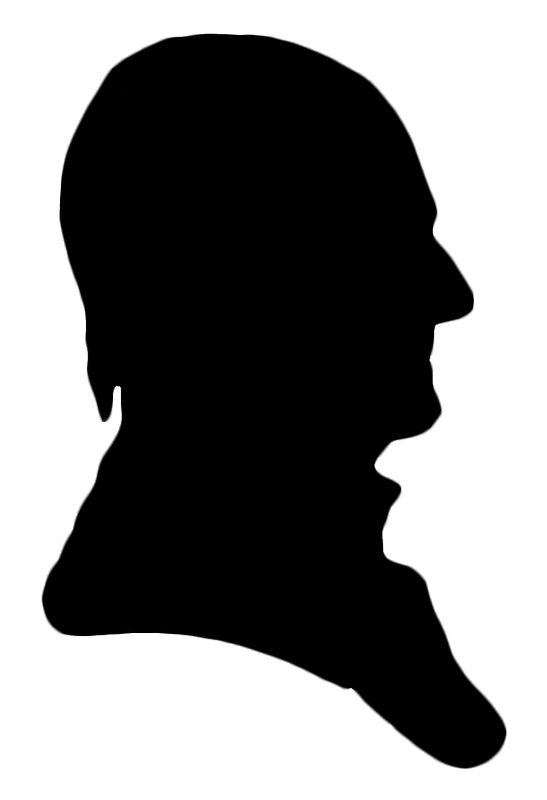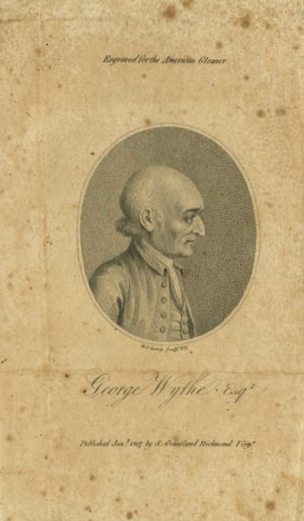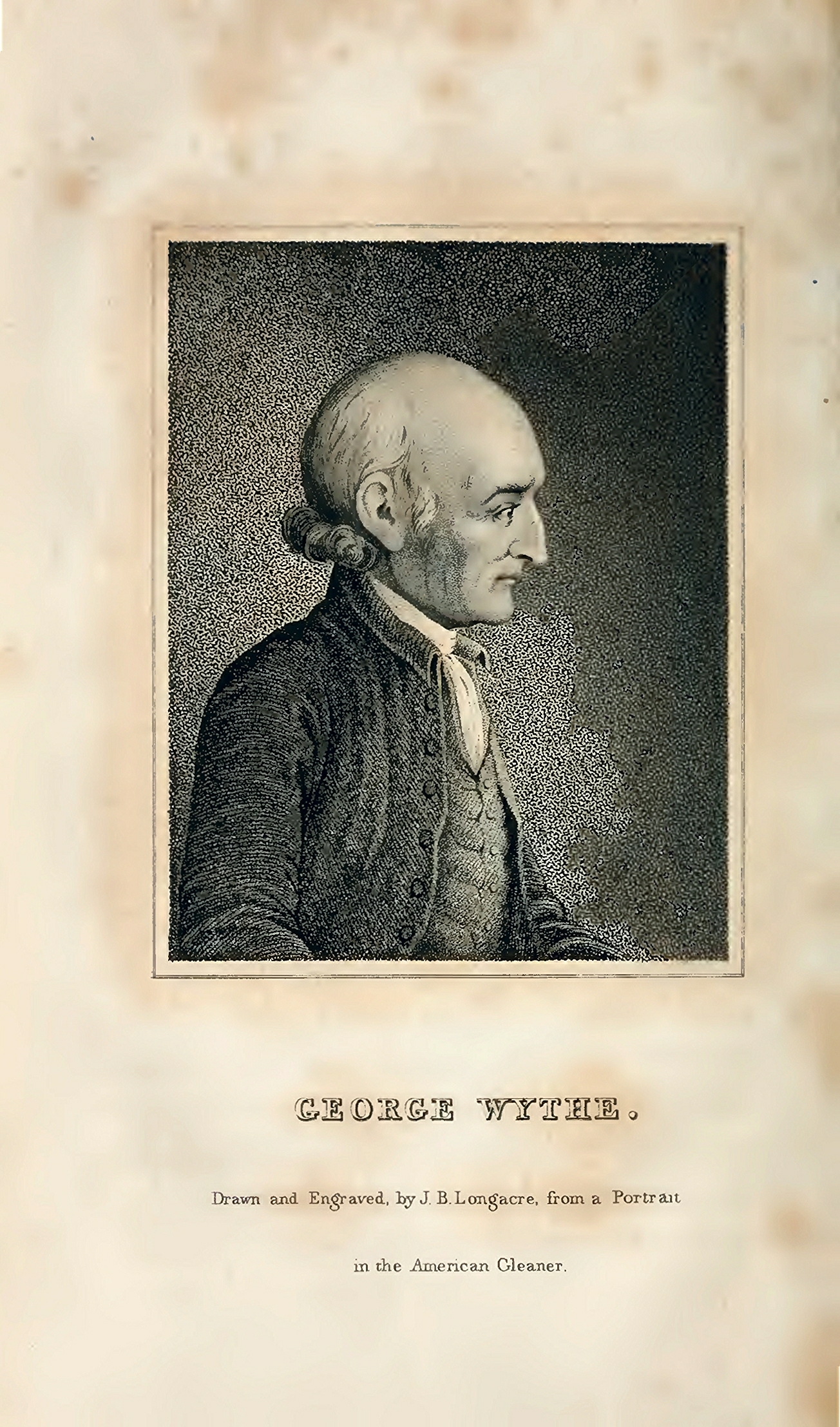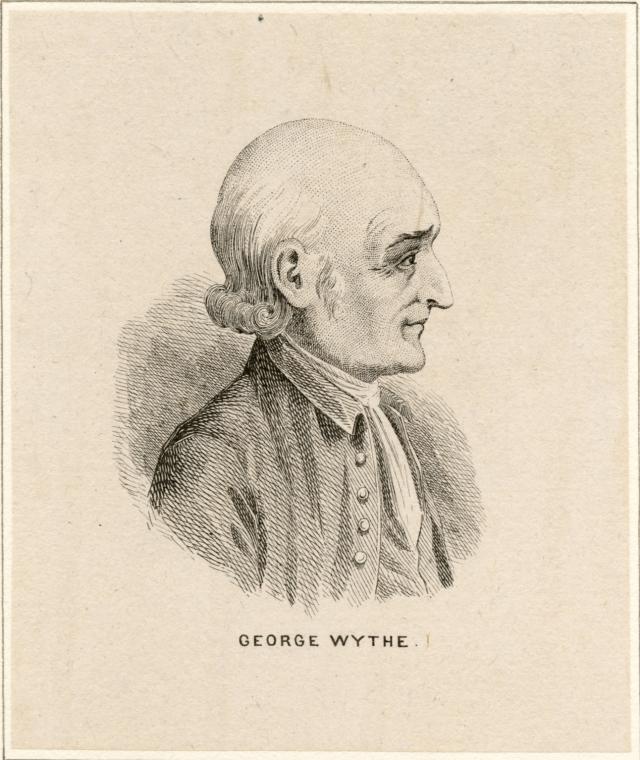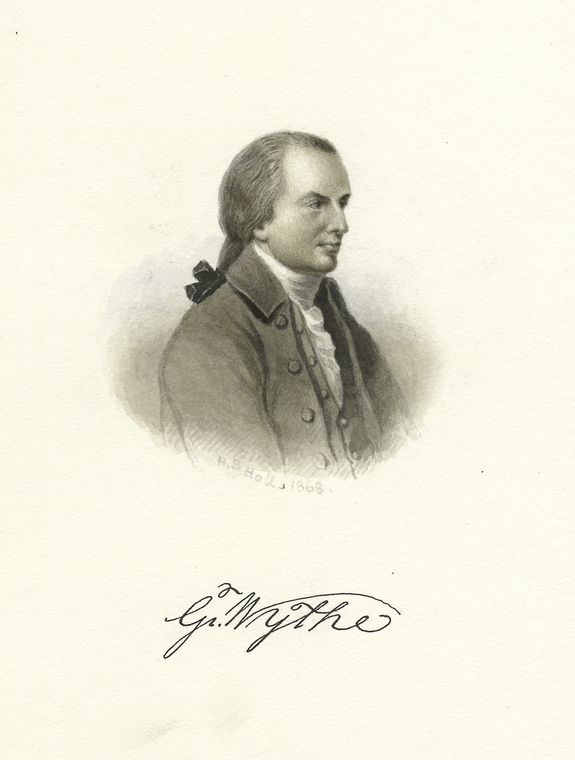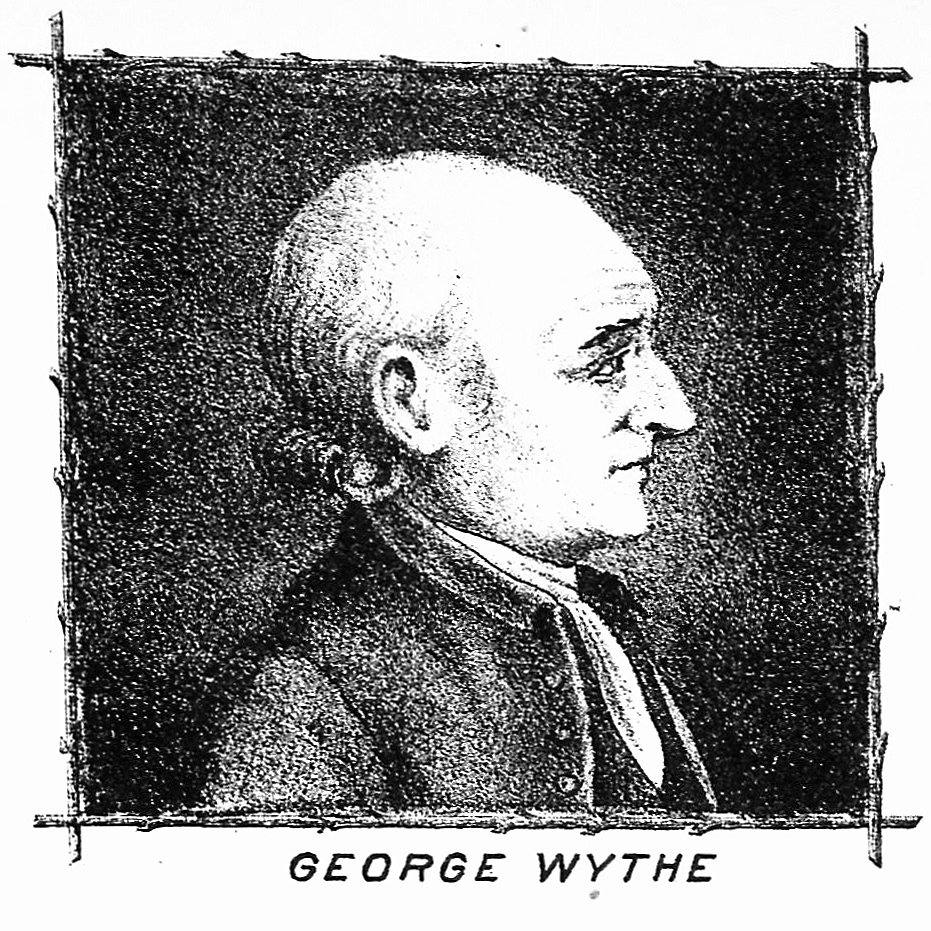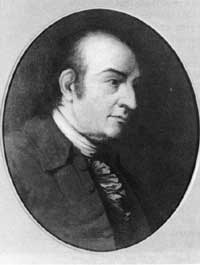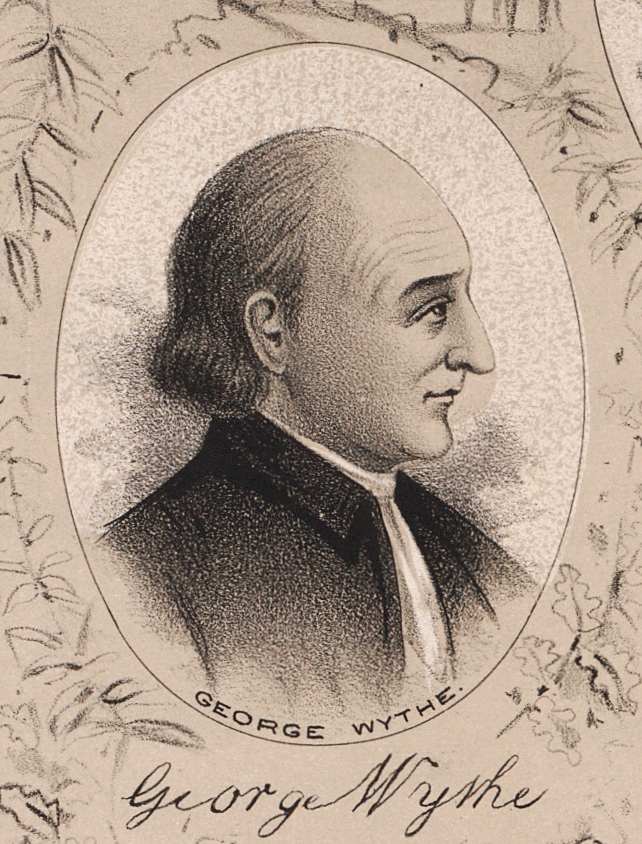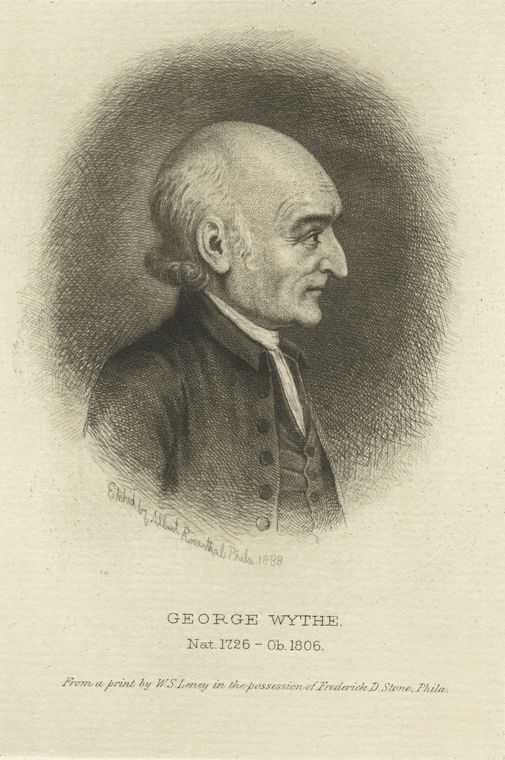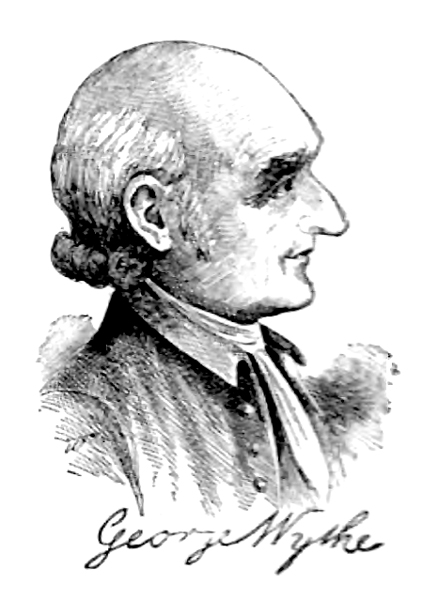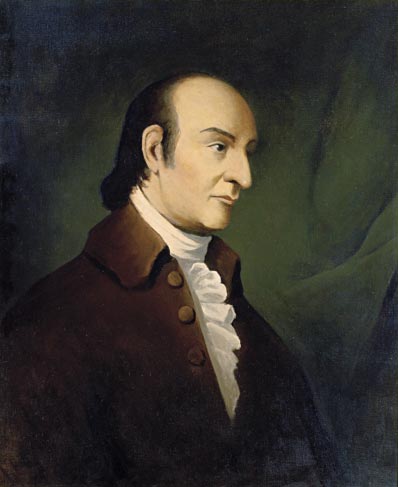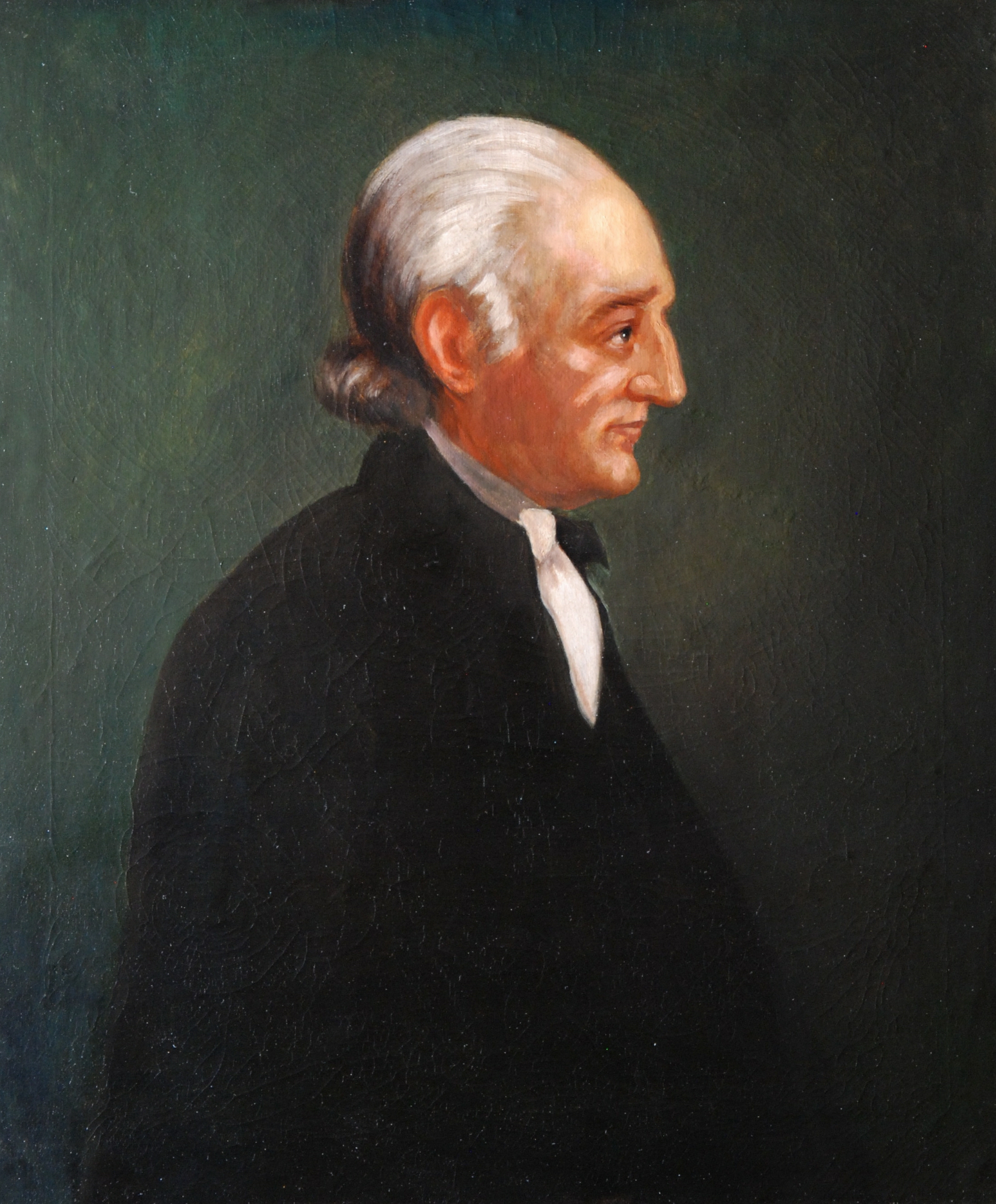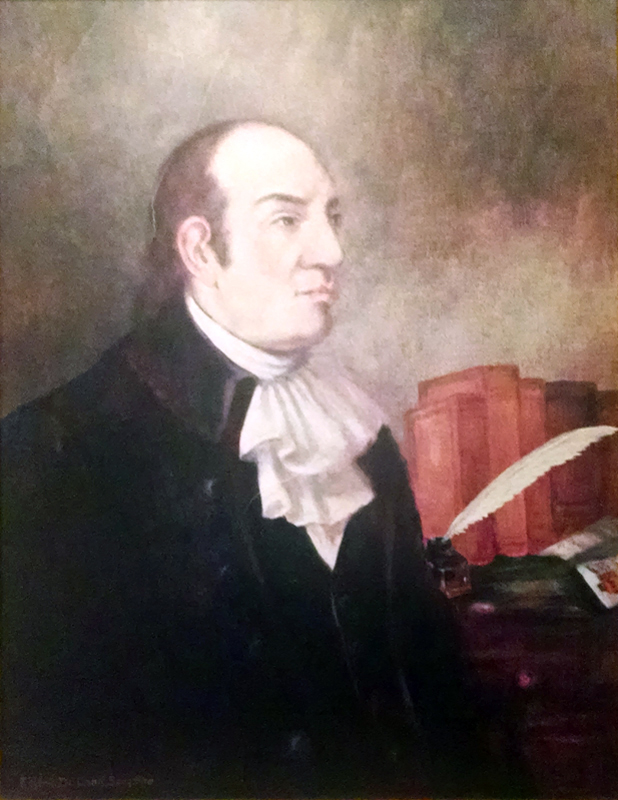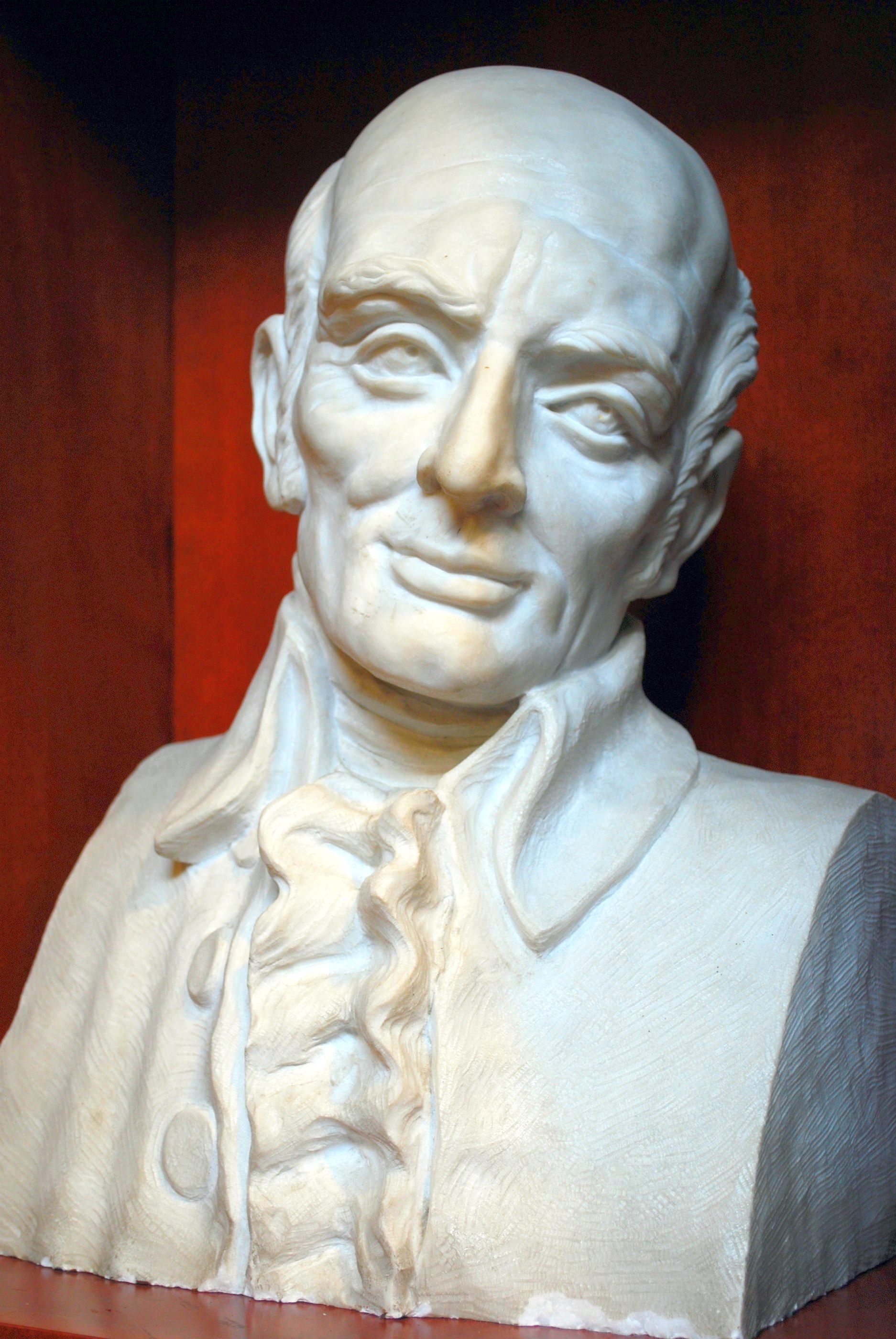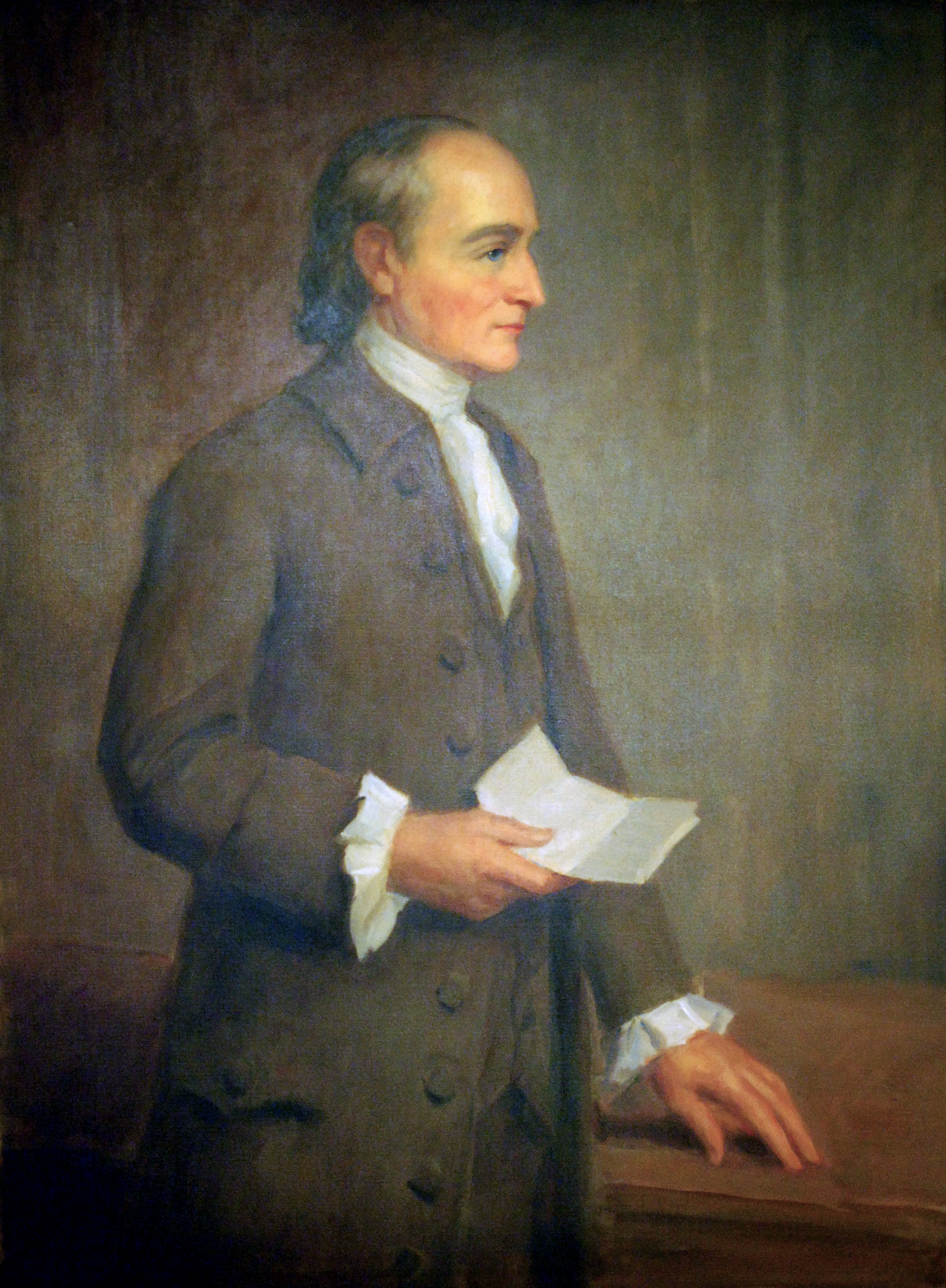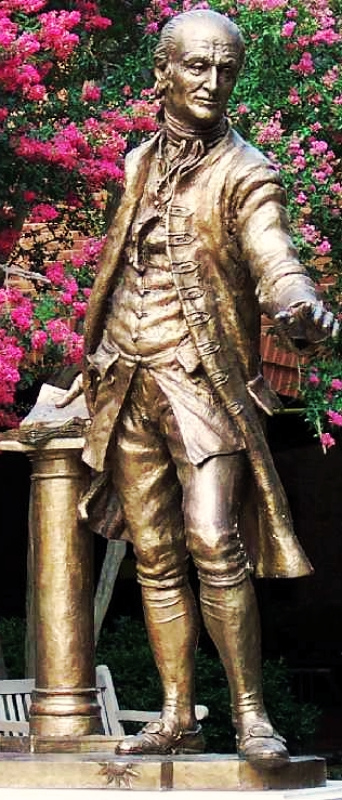Depictions of Wythe: Difference between revisions
No edit summary |
No edit summary |
||
| Line 1: | Line 1: | ||
<randomimage size="400" float="right" | <randomimage size="400" float="right" | ||
choices="SilvetteWythe1979.jpg|GeorgeWythePortrait.jpg|BacheSilhouette.jpg|BenbridgeWythe.jpg|Trumbull1791Wythe.jpg|GreatAmericanLawyers1907Wythe.jpg|Longacre1823Wythe.jpg|Rosenthal1888Wythe.jpg|Erekson1876Wythe.jpg|Crossman1927Wythe.jpg|Leney1807Wythe.jpg" /> | choices="SilvetteWythe1979.jpg|GeorgeWythePortrait.jpg|BacheSilhouette.jpg|BenbridgeWythe.jpg|Trumbull1791Wythe.jpg|GreatAmericanLawyers1907Wythe.jpg|Longacre1823Wythe.jpg|Rosenthal1888Wythe.jpg|Erekson1876Wythe.jpg|Crossman1927Wythe.jpg|Leney1807Wythe.jpg" /> | ||
In an 1806 letter to the painter, [[Jefferson-Peale Correspondence|Charles Willson Peale]] (1741 – 1827), [[Thomas Jefferson]] laments that he only has a "shade in profile" of his friend and mentor, [[George Wythe]], "whose portrait was never taken."<ref>[[http://hdl.loc.gov/loc.mss/mtj.mtjbib016602 Jefferson to Charles Willson Peale, 22 November 1806]], ''The Thomas Jefferson Papers,'' Series 1, General Correspondence, 1651-1827, Library of Congress.</ref> Jefferson sent Peale a copy of the profile, from which a portrait was made by "filling the out line of your late friend Judge Wythe. Whether you may find it equally striking as to likeness I cannot say, for my remembrance has not furnished me with any Idea's of the form of his features, therefore it is all guess work."<ref>[[http://hdl.loc.gov/loc.mss/mtj.mtjbib016670 Charles Willson Peale to Jefferson, 13 December 1806]], ''The Thomas Jefferson Papers,'' Series 1, General Correspondence, 1651-1827, Library of Congress.</ref> The current location of Peale's portrait of Wythe is unknown, and it was probably dispersed with Jefferson's estate after his death. | |||
Despite what Jefferson tells us, there is a portrait identified as Wythe—in minature—in the collection of the [[http://www.rwnaf.org/collections/item?id=1617 R.W. Norton Art Gallery,] in Shreveport, Louisiana, attributed to [[wikipedia:Henry Benbridge|Henry Benbridge]] (1743 – 1812). It is a watercolor on ivory, 1½ inches tall by 1¼ wide, and depicts Wythe as a young man. A 1971 text on Benbridge published by the Smithsonian Institution's [http://www.npg.si.edu/ National Portrait Gallery,] states, however: "Since the history of this portrait does not go back beyond 1941, it is suspect. The technique is not characteristically Benbridge."<ref>Robert G. Stewart, ''Henry Benbridge (1743-1812): American Portrait Painter,'' (Washington, D.C.: Smithsonian Institution Press, 1971), 81.</ref> This does not necessarily mean it is not an authentic portrait of Wythe. | |||
Wythe's profile in shadow (or "shade," as Jefferson describes it) was taken twice: once, in 1804, by William Bache (1771 – 1845); and another at an earlier time in Wythe's life. William DuVal describes the two profiles in a letter to Thomas Jefferson in December, 1806, after Wythe's death: "The profile you have, will shew his appearance at that period of his Life, & the one I have, will exhibit a strong likeness a few years before his untimely Death" | |||
<blockquote> | |||
</blockquote> | |||
==Images of George Wythe== | ==Images of George Wythe== | ||
<gallery widths="250" heights="300" perrow="4"> | <gallery widths="250" heights="300" perrow="4"> | ||
File:BenbridgeWythe.jpg|Miniature | File:BenbridgeWythe.jpg|Miniature, attributed to Henry Benbridge (c. 1770). Original at the [http://www.rwnaf.org/collections/item?id=1617 R.W. Norton Art Gallery,] Shreveport, Louisiana. | ||
File:Trumbull1791Wythe.jpg|Pencil sketch from life, by John Trumbull, in Williamsburg (1791). Image courtesy of the [http://www.history.org/ Colonial Williamsburg Foundation.] | File:Trumbull1791Wythe.jpg|Pencil sketch from life, by John Trumbull, in Williamsburg (1791). Image courtesy of the [http://www.history.org/ Colonial Williamsburg Foundation.] | ||
File:BacheSilhouette.jpg|William Bache silhouette (1804). From [https://catalog.swem.wm.edu/law/Record/593884 ''Shades of Our Ancestors,''] by Alice Van Leer Carrick (1928). | File:BacheSilhouette.jpg|William Bache silhouette (1804). From [https://catalog.swem.wm.edu/law/Record/593884 ''Shades of Our Ancestors,''] by Alice Van Leer Carrick (1928). | ||
Revision as of 18:19, 4 April 2014
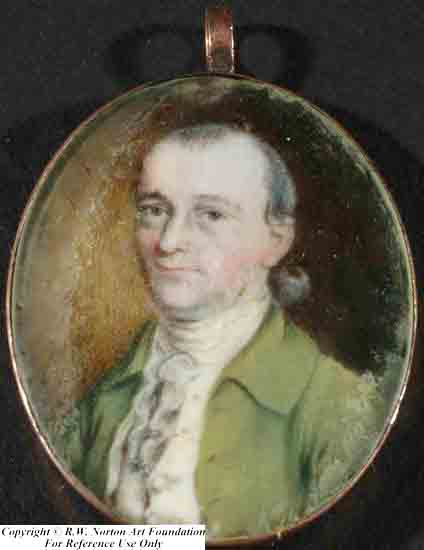
In an 1806 letter to the painter, Charles Willson Peale (1741 – 1827), Thomas Jefferson laments that he only has a "shade in profile" of his friend and mentor, George Wythe, "whose portrait was never taken."[1] Jefferson sent Peale a copy of the profile, from which a portrait was made by "filling the out line of your late friend Judge Wythe. Whether you may find it equally striking as to likeness I cannot say, for my remembrance has not furnished me with any Idea's of the form of his features, therefore it is all guess work."[2] The current location of Peale's portrait of Wythe is unknown, and it was probably dispersed with Jefferson's estate after his death.
Despite what Jefferson tells us, there is a portrait identified as Wythe—in minature—in the collection of the [R.W. Norton Art Gallery, in Shreveport, Louisiana, attributed to Henry Benbridge (1743 – 1812). It is a watercolor on ivory, 1½ inches tall by 1¼ wide, and depicts Wythe as a young man. A 1971 text on Benbridge published by the Smithsonian Institution's National Portrait Gallery, states, however: "Since the history of this portrait does not go back beyond 1941, it is suspect. The technique is not characteristically Benbridge."[3] This does not necessarily mean it is not an authentic portrait of Wythe.
Wythe's profile in shadow (or "shade," as Jefferson describes it) was taken twice: once, in 1804, by William Bache (1771 – 1845); and another at an earlier time in Wythe's life. William DuVal describes the two profiles in a letter to Thomas Jefferson in December, 1806, after Wythe's death: "The profile you have, will shew his appearance at that period of his Life, & the one I have, will exhibit a strong likeness a few years before his untimely Death"
Images of George Wythe
-
Miniature, attributed to Henry Benbridge (c. 1770). Original at the R.W. Norton Art Gallery, Shreveport, Louisiana.
-
Pencil sketch from life, by John Trumbull, in Williamsburg (1791). Image courtesy of the Colonial Williamsburg Foundation.
-
William Bache silhouette (1804). From Shades of Our Ancestors, by Alice Van Leer Carrick (1928).
-
William Satchwell Leney etching (1807). Original at the Virginia Historical Society.
-
Detail from John Trumbull's painting, Declaration of Independence (1818). Original at the U.S. Capitol, Washington, D.C.
-
J.B. Longacre etching (1823), after Leney. From John Sanderson's Biography of the Signers to the Declaration of Independence (vol. 2).
-
Lossing illustration (1859). Image courtesy of the New York Public Library.
-
William Bryan Hall (1868). Image courtesy of the New York Public Library.
-
Brotherhead illustration (1872). From The Centennial Book of the Signers.
-
John Ferguson Weir painting (1876), after John Trumbull. Image from History of the Portrait Collection, Independence National Historical Park, (2001). Original at Independence National Historical Park, Philadelphia.
-
Erekson lithograph (1876). Original at the Library of Congress.
-
Rosenthal, after Leney (1888). Image courtesy of the New York Public Library.
-
From the National Cyclopædia of American Biography (1893).
-
Portrait by William H. Crossman (1927), after John Trumbull. Original with the Colonial Williamsburg Foundation, Williamsburg, Virginia.
-
Wolf Law Library portrait, College of William & Mary Law School, Williamsburg.
-
Portrait by Eugenie DeLand Saugstad (1939), after Weir. Original with the Virginia Historical Society collections, currently on display at the Hampton History Museum, Hampton, Virginia.
-
Marble bust by Felix de Weldon (1954), College of William & Mary Law School.
-
Marble bust by Bryant Baker (1962). Original at the Virginia State Capitol, Library of Virginia art collection, Richmond, Virginia.
-
Portrait by David Silvette (1979), College of William & Mary Law School.
-
Bronze statue, by Gordon S. Kray (2000), College of William & Mary Law School.
See also
- ↑ [Jefferson to Charles Willson Peale, 22 November 1806], The Thomas Jefferson Papers, Series 1, General Correspondence, 1651-1827, Library of Congress.
- ↑ [Charles Willson Peale to Jefferson, 13 December 1806], The Thomas Jefferson Papers, Series 1, General Correspondence, 1651-1827, Library of Congress.
- ↑ Robert G. Stewart, Henry Benbridge (1743-1812): American Portrait Painter, (Washington, D.C.: Smithsonian Institution Press, 1971), 81.
